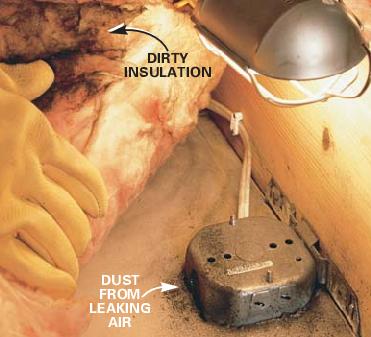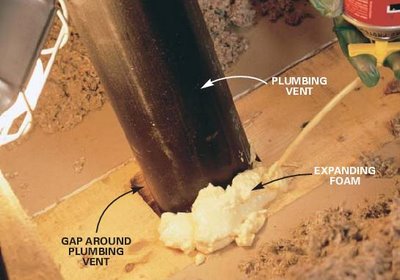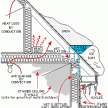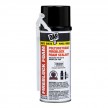Seal Attic Air Leaks
Seal Attic Air Leaks and Save Money on Heating Bills
Attic heat loss due to air leakage accounts for one-quarter to one-third of your annual heating bill!
Insulation itself does not stop the air leaks – you need to stop air leaks in order to let the insulation do its job.
TIP: Blackened insulation is always a good clue that air is leaking in the area.
For less than $100 in caulk, foam and other materials available at hardware store or home center, plus a day’s labor, you can seal attic air leaks by plugging thee holes causing the air leaks and significantly reduce your heating bill.
Plug open stud and joist cavities
Your biggest savings will come from plugging these big holes first.
Open stud cavities are the worst [located in lowered areas of ceilings (sofits) and where the ceiling height shifts, especially in split-level homes.] Plug them with a plastic bag partially filled with insulation. The plastic bag stops the airflow. The insulation makes the bag expand tightly to close off gaps. You can also use tightly fitted rigid foam board or sheet plastic to cover these openings or expanding foam.
Doors and pull down stair hatches
Openings like doors and stairway hatches tend to be the biggest UNINSULATED hole into the attic and air leak culprit. 
Weather strip the edges and insulate the backside of the attic door or stairs. Fold-down stairs can be covered with a lightweight box made of rigid insulation board.
There are commercially available attic stair insulator caps that can be purchased [pictured below]. They range from $60 to $200. See here for an example. of a commercial version.
Image: draftcap.com
To make your own attic stair insulation box like the one pictured below, click here.
Find holes in the floor of the attic
Floor holes, especially around the outside walls, ducts, recessed lights or near plumbing utilities. Also, look for dirty spots in your insulation, this indicates holes where air is leaking into and out of your house. You can seal these holes by using foam sealant, or stapling sheets of plastic over the holes .
Images: RD.com
Around the chimney
Any chimney that runs from the basement through the attic should be sealed at both the basement ceiling and attic floor by use of sheet metal or metal duct tape. Fire codes prohibit the use of combustible materials within 2 inches of chimneys.























